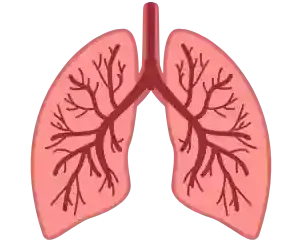Accurate and reliable lung testing for rescue workers. Enhance your respiratory health and ensure safety with our advanced testing solutions
Disclaimer: Do not use this test if you have breathing problems such as asthma and the flu. Also, if you drink alcohol or smoke in everyday life, please consult a medical professional.
Rescue Worker Lungs Test
Test your lungs with this online inspection tool
Hold your breath to measure your lung capacity

Leaderboard
| # | Time (s) |
|---|---|
| 1 | 0.0 |
| 2 | 0.0 |
| 3 | 0.0 |
| 4 | 0.0 |
1. What is a Rescue Worker Lungs Test?
The Rescue Worker Lungs Test is a non-invasive screening designed to evaluate lung health in individuals who work in rescue or emergency services. This test helps identify any changes in lung function that may arise from exposure to dust, smoke, chemicals, or other occupational hazards. It is a preventive tool to monitor lung performance over time.
2. Why is lung health important for rescue workers?
Rescue workers often face environments with poor air quality, such as fire scenes, disaster zones, and industrial accidents. Maintaining healthy lungs is crucial for their performance and safety. A healthy respiratory system ensures they can perform strenuous tasks and endure challenging conditions effectively.
3. Who can benefit from taking the Rescue Worker Lungs Test?
This test is ideal for firefighters, paramedics, police officers, construction workers involved in rescue operations, and even volunteers who frequently work in hazardous environments. It provides valuable insights into lung health, enabling early action if needed.
4. How is the test conducted?
The test typically involves a spirometry evaluation, where participants breathe into a device that measures lung capacity, airflow, and function. It is painless and only takes a few minutes to complete. The results are presented as numerical data and graphs to show lung performance.
5. What types of exposure risks can the test monitor?
The Rescue Worker Lungs Test helps monitor risks associated with:
Prolonged exposure to smoke and soot.
Inhalation of chemicals, such as ammonia or chlorine.
Dust from collapsed structures or construction sites.
Particulate matter from wildfires or industrial fires.
By identifying reduced lung function early, individuals can take steps to minimize further exposure.
6. How often should rescue workers take this test?
While there’s no strict guideline, many organizations recommend annual testing to track changes over time. Frequent testing might be necessary for those working in high-risk environments or after significant exposure events.
7. Can this test predict respiratory illnesses?
The test is not diagnostic but can indicate early signs of reduced lung function. If abnormalities are detected, rescue workers are encouraged to consult medical professionals for a detailed evaluation and treatment plan.
8. Are there any preparation steps needed before the test?
Yes, here are a few tips for accurate results:
Avoid heavy meals at least two hours before the test.
Refrain from smoking for several hours before testing.
Wear loose, comfortable clothing to allow unrestricted breathing.
Inform the tester about any recent respiratory symptoms.
9. How does this test promote workplace safety?
By regularly monitoring lung health, employers can ensure their team is fit for duty. Early detection of lung function decline can lead to interventions, such as providing better protective equipment or modifying tasks to reduce exposure. This proactive approach fosters a safer and healthier work environment.
10. Is this test covered by workplace health programs?
Many employers include lung health tests as part of their occupational health and safety programs. Workers should check with their organization to see if the test is available through their employer or insurance plan.
